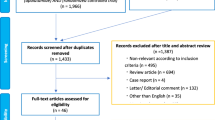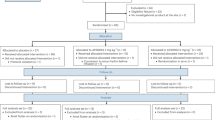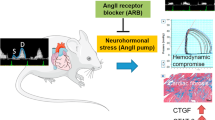Abstract
Study design:
Case report.
Objective:
To describe two clinical examples of denervation hypersensitivity, an enhanced response to catecholamines demonstrated experimentally in tetraplegic patients.
Setting:
USA.
Case reports:
A 63-year-old man with chronic paralysis at C4 ASIA Impairment Scale (AIS) A with partial preservation to T6, and a history of coronary artery and pulmonary disease, developed bradycardia leading to cardiac arrest. He was treated with intravenous atropine 0.4 mg and adrenaline 1 mg. He regained consciousness and blood pressure within 30 s, but developed supraventricular tachycardia leading to ventricular fibrillation and death within minutes. The dose of adrenaline was routine for a cardiac arrest.
A 60-year-old man with chronic paralysis at C6, AIS A, presented with fever to 106 °F and a renal stone. Thirty minutes after treatment with intravenous fluids, antibiotics, and 1 g aspirin orally, he became afebrile, then suddenly lost consciousness and palpable pulse. He recovered with equal rapidity after an intravenous injection of 0.1 mg adrenaline. The dose of adrenaline was a tenth the usual dose for cardiac arrest.
Conclusion:
Because of denervation hypersensitivity, effective treatment of a cardiac arrest in tetraplegic patients may require a reduced dose of adrenaline.
Similar content being viewed by others
Log in or create a free account to read this content
Gain free access to this article, as well as selected content from this journal and more on nature.com
or
References
Mathias CJ, Christensen NJ, Corbett JL, Frankel HL, Goodwin TJ, Peart WS . Plasma catecholamines, plasma renin activity and plasma aldosterone in tetraplegic man, horizontal and tilted. Clin Sci Mol Med 1975; 49: 291–299.
Mathias CJ, Frankel HL, Christensen NJ, Spalding JMK . Enhanced pressor response to noradrenaline in patients with cervical spinal cord. Brain 1976; 99: 757–770.
Frankel HL, Mathias CJ, Spalding JMK . Mechanisms of reflex cardiac arrest in tetraplegic patients. Lancet 1975; 2: 1183–1185.
Jones PG, Miles JL . Overcoming barriers to in-hospital cardiac arrest documentation. Resuscitation 2008; 76: 369–375.
Schlievert PM, Bettin KM, Watson DW . Effect of antipyretics on group A Streptococcal pyrogenic exotoxin fever production and ability to enhance lethal edotoxin shock. Proc Soc Exp Biol Med 1978; 157: 472–475.
Acknowledgements
This study is the result of work supported with resources and the use of facilities at the Boston Healthcare Center, Boston, MA, USA.
Author information
Authors and Affiliations
Corresponding author
Rights and permissions
About this article
Cite this article
Frisbie, J. Hypersensitivity to administered adrenaline in tetraplegia. Spinal Cord 47, 264–265 (2009). https://doi.org/10.1038/sc.2008.84
Received:
Revised:
Accepted:
Published:
Issue date:
DOI: https://doi.org/10.1038/sc.2008.84



